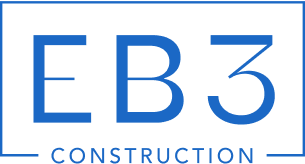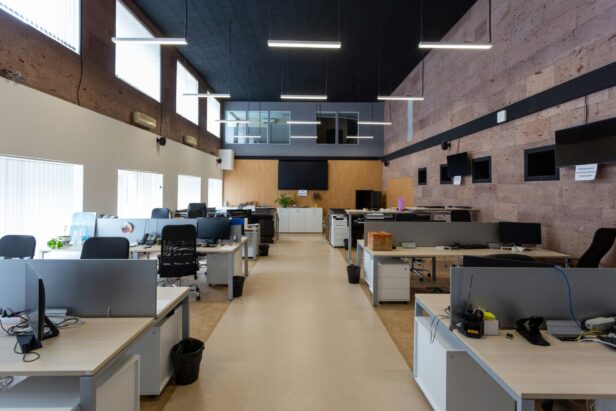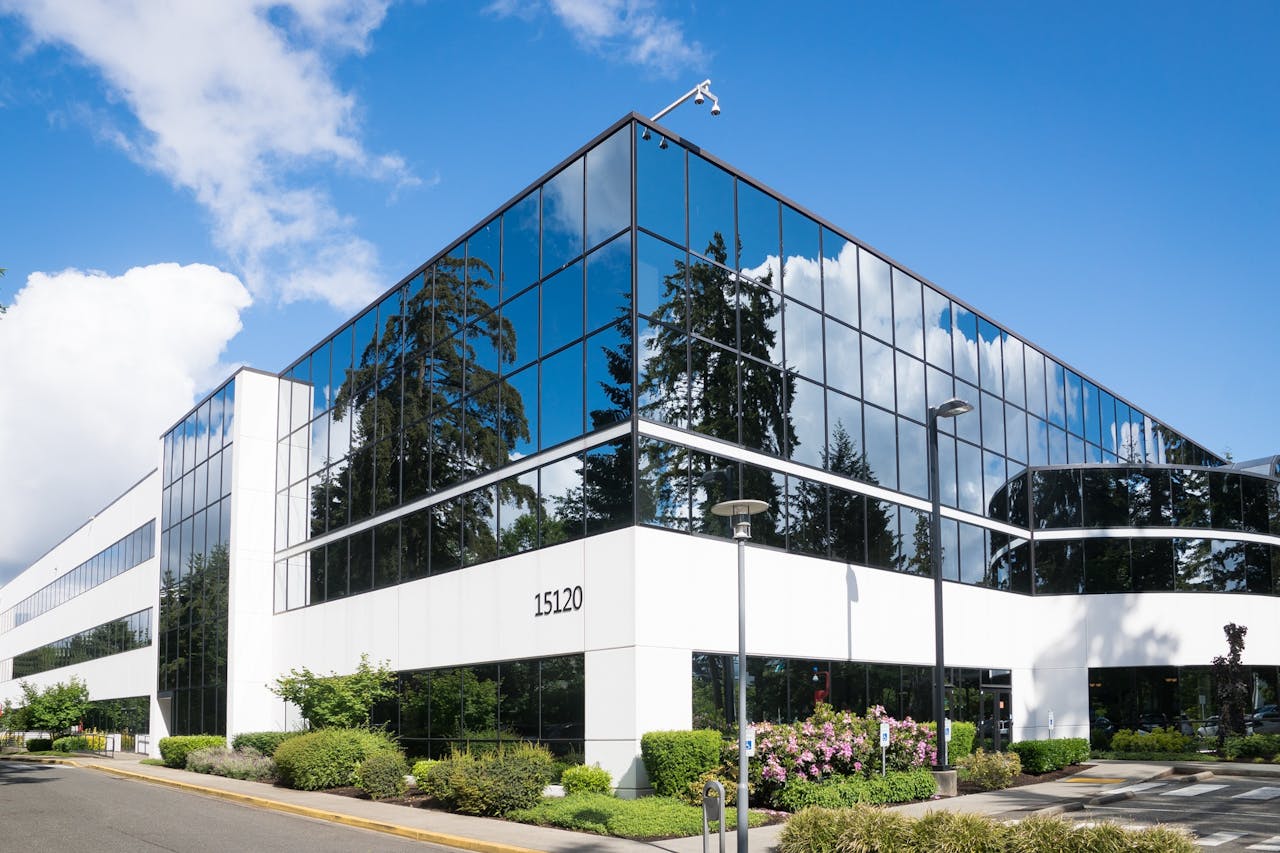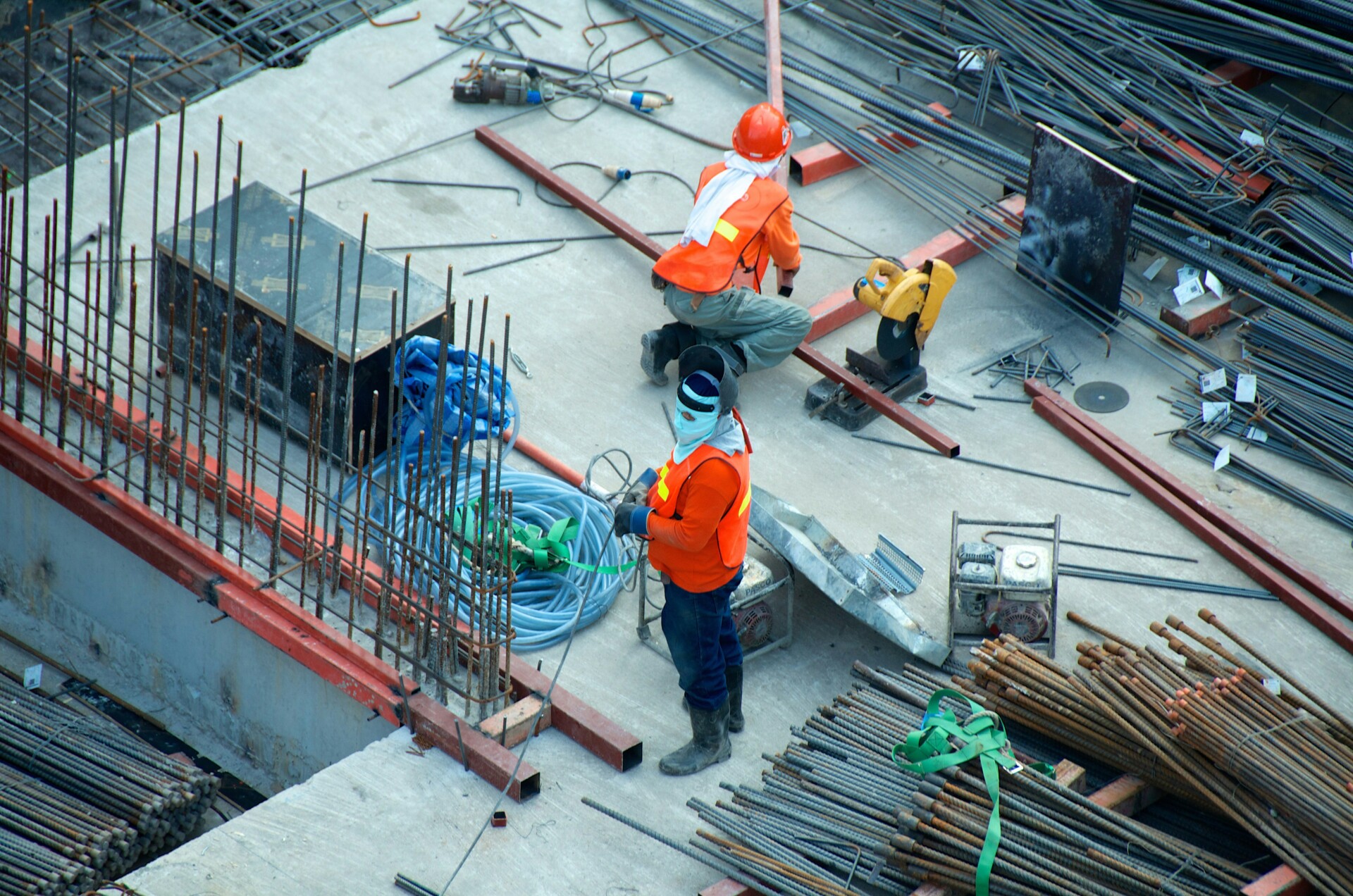Thoughtful office construction goes beyond aesthetics—it shapes how people collaborate, focus, and feel every workday. By integrating flexible layouts, natural elements, ergonomic foundations, and robust technology from the outset, developers can create spaces that inspire productivity while adapting to future needs.
Equally important is understanding how design choices influence renovation budgets. From light refreshes to full-scale transformations, costs vary widely based on scope, location, and material quality. This guide breaks down the key design elements that elevate modern workspaces and outlines realistic cost ranges to help owners plan efficiently and confidently.
Office Construction Design Elements & Renovation Cost Considerations
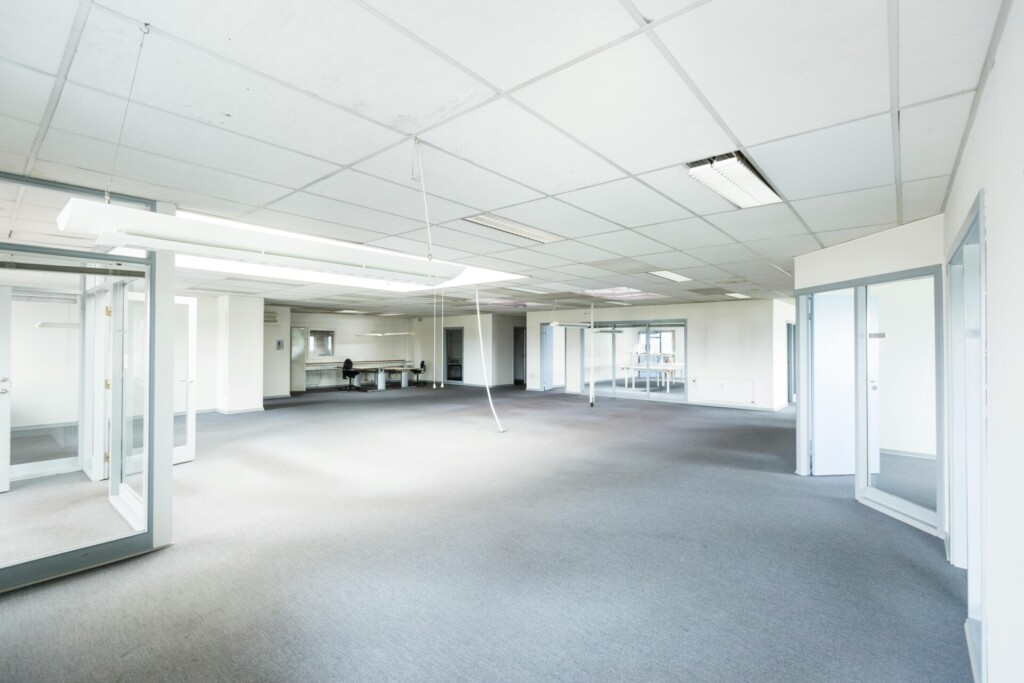
When approaching office construction projects, it”s important to recognize that thoughtful workspace design can significantly impact productivity, employee satisfaction, and operational efficiency. Developers and property owners often seek spaces that balance aesthetics with practicality, aiming to create environments where teams can thrive. Several key design elements can contribute to creating effective modern workspaces.
Strategic Layout and Flexible Spaces
Flexibility is a crucial aspect of workspace development. The trend has shifted from rigid cubicle farms to adaptable environments that can transform based on changing needs. When constructing open workspaces, focus may be placed on acoustic management through the strategic placement of sound-absorbing materials and creating distinct zones that naturally flow into one another.
During construction, attention can be paid to creating varied work settings within a single floor plan. This may include installing modular walls that can be reconfigured, collaborative hubs with writable surfaces, and quiet focus areas with appropriate sound isolation. Thoughtfully designed spatial variety can potentially contribute to productivity improvements.
Biophilic Design Integration
Natural elements can serve as both aesthetic and functional components in workspace design. An approach to biophilic design may begin at the structural level, considering window placement to capture natural lighting and potentially reduce dependence on artificial illumination, which may contribute to both energy efficiency and workspace quality.
Living walls can serve dual purposes: adding visual interest while potentially improving air quality. When building out break areas, water features may be incorporated to provide both white noise benefits and stress-reducing visual elements. Natural materials like reclaimed wood flooring, stone accents, and sustainably harvested timber beams can bring texture and warmth while reinforcing environmental commitments.
Ergonomic Foundations
Proper ergonomics can start with the structural foundations put in place during the build phase. This may include installing appropriate floor load capacities to support specialized ergonomic workstations and integrating adequate electrical infrastructure to power adjustable desks throughout the space. Height-adjustable counters in common areas can accommodate diverse needs while meeting ADA requirements.
Construction plans can account for proper spacing between workstations to allow for a full range of motion and accessibility. Building in correct electrical and data port placement at both sitting and standing heights may eliminate the trip hazards of aftermarket solutions. These considerations can significantly impact the final functionality of the workspace.
Technology Integration
Modern workspaces often require robust technological infrastructure. This can include installing enterprise-grade networking capabilities with redundant systems to support connectivity. Conference rooms may feature built-in presentation systems with seamless controls, potentially reducing setup time and technical difficulties.
During construction, coordination with IT specialists can ensure proper placement of data drops, charging stations, and digital display mountings. This upfront coordination may prevent costly retrofits and contribute to a clean, professional appearance. There”s an increasing interest in sensor-enabled environments that track space utilization and automatically adjust lighting and temperature—technology that requires careful planning during the initial construction phase.
Brand Expression Through Design
Company culture can be translated into physical environments through thoughtful construction choices. Custom architectural elements like branded reception desks, specialty lighting fixtures, and statement staircases may create memorable first impressions that reinforce identity. Workspace design for financial services clients, for example, might incorporate more sophisticated finishes and private meeting spaces to convey stability and discretion.
The physical expression of brand can extend beyond surface treatments. Spaces for displaying company history, achievements, and values may be incorporated. Through careful material selection and craftsmanship, the quality of construction itself can reflect high standards and attention to detail.
By incorporating these design elements during construction, workspaces can be created that not only look impressive but also function effectively for the people who use them daily. An approach that combines practical construction expertise with forward-thinking design principles can result in environments that support both current operations and future adaptability.
How Much Does an Office Renovation Cost?
Understanding the financial investment required for an office renovation is crucial for developers and property owners planning their next project. As general contractors, we aim to guide clients through the budgeting process to help ensure they have realistic expectations before starting construction. The costs of renovating office spaces can vary significantly based on several factors, including scope, location, building age, and material quality.
Cost Ranges by Project Scope
At EB3 Construction, we typically categorize office renovations into three main tiers, depending on the extent of work required. This can help our clients understand the level of investment they might anticipate for their specific project goals.
For a light refresh of an existing office space, typical costs range from $8 to $55 per square foot, depending on project specifics. This level can include basic improvements such as new paint, carpet replacement, ceiling repairs, and modest updates to existing casework. These projects can provide a noticeable facelift without needing major structural changes or system upgrades.
When more substantial improvements are needed, a moderate remodel may typically cost between $55 and $120 per square foot, subject to project requirements. At this tier, we can potentially implement limited wall reconfigurations, update portions of mechanical systems, reconfigure lighting, and install new reception areas or other key casework elements. Clients may choose this level when their workflow has changed, but the basic office layout remains functional.
Full Renovation Considerations
For comprehensive transformations, full renovations typically range from $95 to $220 per square foot, depending on the project scope and complexity. These projects may involve completely gutting existing spaces—removing walls, fixed casework, outdated finishes, and sometimes even reconfiguring restrooms. While existing mechanical system cores can often be reused, most full renovations may require significant ductwork reconfiguration to accommodate new space layouts.
Commercial office renovation costs can vary significantly based on market trends and various factors. Location can significantly impact these costs—renovating in downtown areas or historic buildings may command premium pricing compared to suburban locations.
When planning a renovation budget, it”s often advisable to allocate an additional contingency of 10-15% to address unexpected conditions that might be discovered once construction begins. This can be particularly important in older buildings where previous renovations may have created hidden challenges.
| Project Type | Cost Range per Square Foot (USD) |
|---|---|
| Light Refresh | $8 – $55 |
| Moderate Remodel | $55 – $120 |
| Full Renovation | $95 – $220+ |
Disclaimer: Pricing figures are based on publicly available market data and are intended for general estimation purposes as of undefined. They do not represent a formal quote from EB3 Construction. Actual costs will vary by project scope, location, labor rates, and material prices.
Additional Budget Considerations
Beyond construction costs, it”s important to budget for professional design services. These can typically range from $3-$17 per square foot or roughly 2-13% of construction costs, depending on project complexity. Light refreshes may require only interior design services at the lower end of this range, while full renovations might need comprehensive architectural and engineering teams, potentially reaching the higher end of the range.
Furniture, Fixtures, and Equipment (FF&E) represent another significant budget category that should be considered in initial planning. FF&E costs can vary widely based on the project scope. For light refreshes, these costs may be comparable to or even exceed construction costs, while for more extensive renovations, they typically range from 25-65% of construction costs. These elements can include workstations, conference room furniture, seating, audiovisual systems, and branding elements—all components that can directly impact the functionality and aesthetics of the completed space.
Properly accounting for these “soft costs” early in the planning process can help prevent budget surprises and contribute to a more satisfactory outcome for clients. By establishing a comprehensive budget that includes all aspects of the renovation, we aim to help clients achieve projects that align with their financial and functional objectives.
What Steps Should You Take When Planning an Office Renovation?

Planning an office renovation requires strategic thinking and careful coordination. At EB3 Construction, we approach office renovation projects with the aim of achieving successful outcomes for our clients. A well-executed planning process can contribute to a smoother renovation experience.
Assess Your Current Space and Define Clear Objectives
A renovation typically begins with a thorough assessment of the existing space, including traffic flow patterns, structural considerations, and how the current layout may affect productivity. During this phase, we can assist developers and property owners in articulating specific, measurable goals for the renovation.
Clear objectives can guide decisions throughout the project. Whether the aim is to accommodate growth, improve workflow efficiency, update systems, or enhance brand image, keeping these goals central in the planning process may help maintain focus when making critical decisions about design elements, materials, and budget allocation.
Establish a Realistic Budget Framework
Budget planning is a critical early step that shapes the renovation process. We can work with clients to develop comprehensive budgets that consider potential expenses, including materials, labor, permits, professional fees, contingency funds, and any temporary relocation expenses.
The construction market can experience material price fluctuations, making accurate budgeting both challenging and essential. Setting aside a portion of the total budget as a contingency fund to address unforeseen issues may be advisable. This financial buffer can provide peace of mind and help prevent project delays due to budget constraints.
Assemble Your Project Team
The success of a renovation can depend on having the right team in place. A comprehensive team may include:
- A dedicated project manager to oversee the entire renovation
- Design professionals to translate vision into workable plans
- Key stakeholders from your organization who can provide input and make decisions
- Specialized contractors for electrical, plumbing, HVAC, and other systems
Beyond technical expertise, establishing clear communication protocols from the start can be beneficial. Regular progress meetings, shared document platforms, and designated decision-makers may help prevent misunderstandings and keep the project moving efficiently.
Research Building Codes and Obtain Necessary Permits
Navigating building codes, zoning requirements, and permitting processes can be complex for property owners. Thorough research into local regulations and managing the permit application process can help ensure compliance. This proactive approach may help prevent delays and code violations that could impact your renovation timeline.
Permit approval times can vary by jurisdiction, so incorporating realistic timeframes into project schedules is important. Starting the permitting process early can be essential to maintain target completion dates.
Gather Employee Input and Develop Relocation Strategies
When renovating an occupied space, minimizing disruption to operations is crucial. Gathering input from employees who will use the space daily can reveal valuable information about workflow patterns and space utilization.
Based on the renovation”s scope, appropriate relocation strategies can be developed. This might involve phasing the renovation to allow continued use of portions of the space, setting up temporary workspaces, implementing after-hours construction schedules, or coordinating a temporary relocation if necessary.
Create a Detailed Project Timeline
A well-structured timeline is essential for effective project management. Comprehensive schedules can break the renovation into manageable phases with specific milestones and deadlines. This timeline should account for dependencies between different aspects of the work and include realistic buffers for potential delays.
Precise scheduling and coordination of subcontractors are crucial for maintaining momentum throughout the renovation process. Project management tools can be used to track progress and make adjustments as needed to keep projects on schedule.
Select Quality Materials and Furnishings
Material selection greatly impacts both the aesthetic appeal and functionality of a renovated space. The selection process should balance considerations of durability, appearance, maintenance requirements, and cost-effectiveness.
When choosing materials, focusing on long-term value rather than simply initial cost can be beneficial. Quality flooring, lighting, and furnishings may require a larger upfront investment but can contribute to improved longevity and performance. Considering sustainability factors and selecting environmentally responsible options may qualify for certifications like LEED or WELL.
Develop Contingency Plans
Even with meticulous planning, renovation projects may encounter unexpected challenges. Discovering hidden structural issues, encountering material delivery delays, or dealing with weather disruptions can impact timelines and budgets. Developing contingency plans for various scenarios allows for quick adjustments when issues arise.
These backup plans might include identifying alternative materials that could be used if primary choices become unavailable, establishing flexible work sequences that can be adjusted as needed, or having additional resources on standby to address unforeseen complications.
Implement Clear Communication Protocols
Consistent communication is essential for a successful renovation project. Establishing structured communication protocols can keep all stakeholders informed throughout the process. This may include regular progress meetings, detailed documentation, and dedicated points of contact for different aspects of the project.
For developers and property owners managing tenant expectations during renovations, communication templates and strategies can help maintain positive relationships throughout the construction process. Transparency about timelines, potential disruptions, and progress helps manage expectations and build trust.
By following these strategic steps and partnering with experienced professionals, property owners and developers can navigate the complexities of office renovation planning. The investment in thorough planning can contribute to smoother execution, better budget control, and ultimately, a transformed space that meets objectives.
Conclusion: Making Your Office Remodeling Project a Success
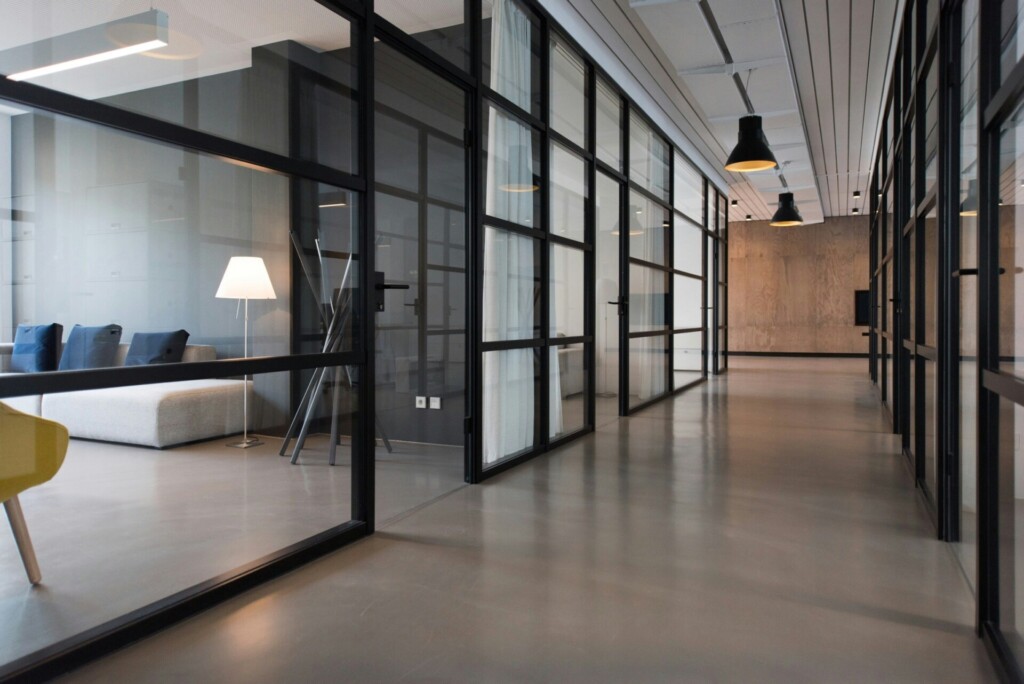
A thoughtfully executed office renovation can transform your physical space and potentially impact your business operations. We aim to approach remodeling projects with a construction-first mindset, balancing aesthetic considerations with practical buildability to create workspaces that are both inspiring and functional. Given the current market environment with its material price fluctuations and supply chain challenges, this integrated approach can be essential.
When coordinating office renovation projects, we typically focus on three vital elements: timeline management, construction feasibility, and code compliance. Our approach involves establishing clear communication channels among all stakeholders from the start, which can lead to successful renovations. This practical approach aims to minimize disruptions to daily operations while working to realize design intentions. We also strive to incorporate flexibility into our construction plans, recognizing that workspace needs may continue to evolve after project completion.
As your general contractor, we understand that office renovations can represent significant investments for developers and property owners. That”s why we typically prioritize value engineering and constructability reviews during pre-construction to identify potential issues early in the process. The completed environment should aim to reflect your company”s brand identity while creating functional spaces that support how your team works. By partnering with professionals who understand both design principles and construction realities, you can work towards positioning your renovation project for success from foundation to finish.
Ready to transform your workspace with a renovation partner who understands construction from the ground up? Contact EB3 Construction to discuss your office remodeling vision.
